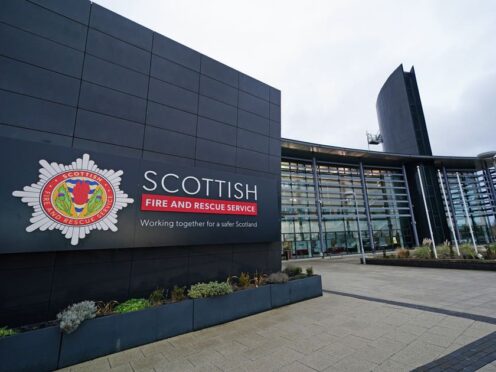One of Scotland’s most senior firefighters has called for “urgent action” as figures show that some Scottish fire stations are no longer fit for purpose.
The Scottish Fire and Rescue Service (SFRS) has issued figures showing that almost half of its 356 fire stations are deemed to be in “poor or bad” condition, while two-thirds of the total SFRS estate is more than 30 years old.
Fourteen fire stations also have issues with Raac (reinforced autoclaved aerated concrete) panels, and have had temporary supports installed to reinforce roofing.
Deputy chief officer Stuart Stevens said: “Some of our ageing buildings are no longer fit for purpose and require urgent action.
“We have a significant number of fire stations without provisions such as dedicated locker rooms, dignified facilities or sufficient showering facilities.
“Our buildings need to be safe, provide welfare facilities and comply with guidelines around decontamination after incidents to help protect our firefighters’ health.”
He called on more capital investment in the service to find a “permanent solution” to the problem.
“While we welcome the uplift in our capital budget, we do not have the budget to address this and doing nothing is simply not an option. We must find a permanent solution,” he said.
The call for more investment comes as the SFRS faces fresh challenges brought about by climate change, with large wildfires and flooding becoming increasingly common.
Mr Stevens continued: “Last year, we saw extreme weather events that placed an unprecedented demand on our emergency service.
“This included one of the largest wildfires on record at Cannich in the Highlands and Storm Babet, which devastated many communities in the north east.
“These types of incidents require the deployment of hundreds of firefighters and often occur in areas where we do not have permanently staffed stations.
“We have prioritised investment and bolstered our fleet in recent years with the addition of 20 specialist, water rescue boats and the implementation of 25 dedicated wildfire stations across Scotland.
“But we expect climate change to intensify and present further challenges that we must be prepared to meet.”
The service has launched a public survey to develop options for how the service could be changed, ahead of a consultation this year.
Mr Stevens said: “We are calling on people across the country to share their feedback and tell us what you want from the Scottish Fire and Rescue Service.”
The Shaping our Future Service: You Say survey is open to the public until June 30 2024.
Community safety minister Siobhian Brown said: “The emergencies that the SFRS respond to have changed significantly over the years. Partly as a result of an emphasis on prevention, house fires in Scotland have decreased by almost half in the past 20 years and the total number of fires is down by 56% in the same period.
“The overall number of incidents that SFRS attends, however, has increased, with climate change presenting more challenges concerning flood risks and wildfires.
“It is right, then, that the SFRS carefully considers how the service should adapt to the changing risks to ensure it is as effective and efficient as possible and that firefighters are in the right place at the right time.
“I would encourage everyone to engage with SFRS and complete their online survey asking the public what they need from their fire service and where they think resources should be prioritised.
“Whatever changes may be considered by SFRS in the future, I have absolute faith that the safety of our communities will remain steadfastly the service’s top priority.”
